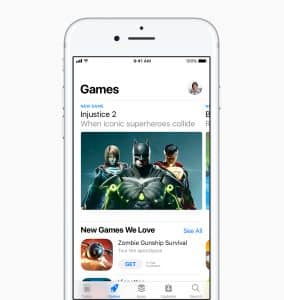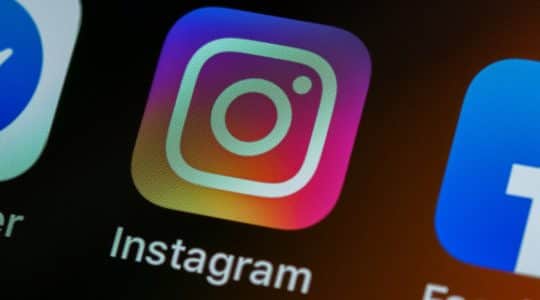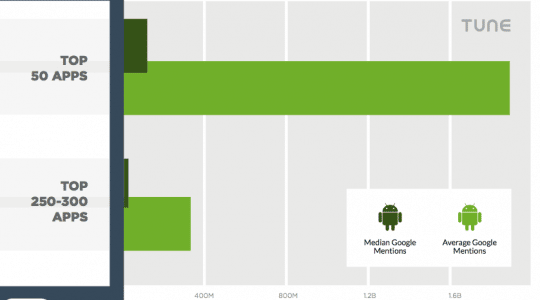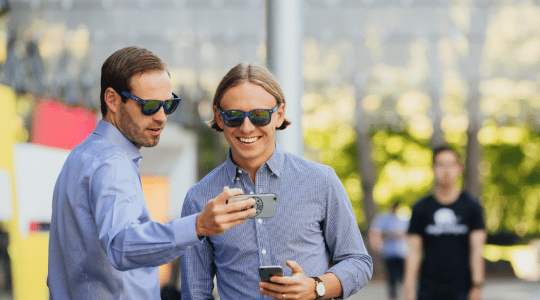
Image source: Pixabay
How do you boost marketing efficiency 35%, 150%, or even an absurd 680%? Simple: you do what top marketers like Sandra Rand have done.
Which is: synergize paid, earned, and owned marketing channels.
As top marketers have learned, blending marketing campaigns across both paid and organic boosts both, sometimes in surprising and unexpected ways. Conversely, treating each channel as individual and separate costs marketers massive savings, much-needed insights, and huge potential upside.
Last week we looked at the results this generates: almost pure alchemy. This week, we’ll look at why channel synergy works.
This is part two of a five-part series on Better Together: The elements of paid & organic marketing
Get the entire free report now
Let’s start at the beginning …
Marketers, customers, and journeys
We know that 86% of marketers can’t consistently measure their customers’ cross-device activity. We also know that marketers believe that technology, used properly, can double their visibility of the customer journey. And that significant real-time visibility into your customers’ journeys should yield significantly better marketing ROI: 70% better, to be precise.

Image source: Pixabay
Similar parallels exist for organic and paid marketing.
And they’re very relevant to channel synergy.
It’s hard for marketers to measure how organic and paid media interact. Marketers implicitly know, however, that they do, and that the interaction can be very, very positive. And marketers generally believe that mixing paid and organic results in significantly better ROI.
In addition, as prospects navigate in and around paid and organic marketing, each presents different and significant steps in the customer journey.
Global channel synergy: Common sense
It’s common sense that owned, earned, and paid are synergistic. Most marketers would agree.
“Think of paid media as the quarterback and earned and owned as the offensive line,” says Mike Gilloon, Director of Strategic Communications at Bozell. “Like paid media, the quarterback is very important and often gets most of the attention. But he’s not very effective without a strong offensive line.”
This ground truth assumption is why we do PR and brand marketing.
“When someone searches in Google or sees an ad on Facebook they are going to click on the companies that have the best reputation,” says Ismael El-Qudsi, co-founder and CEO of Internet Republica. “For instance, if you are going to buy a pair of sneakers you will most likely prefer to click on a Nike ad versus an ad from a less-known brand.”
There’s psychology behind this as well as reasoning, says Amber Kemmis, VP of Client Services at SmartBug Media.
And dating logic, apparently:
“People don’t respond to product or service pitches. You have to ease them into the relationship versus a proposal on the first date … good things come to those who wait.”
In other words, you’re not converting a customer on the first interaction. Performance marketing follows brand marketing, because people buy from companies they know and trust.
(Ultimately, of course, all marketing is performance marketing, but we can get into that later.)

Image source: Pixabay
How paid influences organic
Customers usually don’t buy on a first date, and that behavior increases with price point and risk. Mixing paid and organic expands your brand footprint and customer touchpoints, and the result is better, more effective marketing.
Brand umbrellas
One way paid media influences organic marketing is with a brand umbrella.

Image source: Apple
Unknown brands are risky. And while organic growth is slow, paid serves as a shortcut to build a baseline of familiarity. Jason Parks, President of The Media Captain, says this is critical in building organic inquiries.
“Paid ads have been a big reason for the constant uptick in organic because people will hit our website, drop off, remember the brand name, then conduct an organic search … and convert,” he says.
Sometimes organic feeds organic, too.
“When you put a product on Amazon, it often populates on Google’s organic searches, which makes it synergistic,” Parks adds.
Retargeting or remarketing can build relationships, marketing experts say. It can also be valuable throughout the customer journey, even if retargeted ads are not click or last touch events before customer acquisition, says Shanti Shunn, a digital marketing strategist at Vizion Interactive.
“Remarketing is definitely a channel that, while it may not drive direct business, it may, like social media, continue to create a business to consumer (or potential consumer) relationship. In that respect, display advertising can also work to reinforce other channels.”
Signaling factors and higher ranking
Many modern marketplaces use signalling factors to understand consumer behavior, and then reflect that back to the market in terms of top lists, bestsellers, and factors that build into organic placement.
One of those signalling factors is sales velocity, and it’s especially important in the App Store and Google Play.
“Any impact you have on driving quality velocity will help with organic ranking,” says Patrick Haig, Director of Product Management at TUNE.
Similar things are true in marketplaces like Amazon, or Google/Bing search results, which are essentially marketplaces for answers. Additional volume driven by paid media results in additional consumer interest and activity, results in better organic placement, results in a spiralling synergistic impact.
Message testing
Many marketers will try new messaging in a small but statistically significant paid media test. Messaging that resonates can then be funneled back into organic marketing, such as cornerstone blog posts.
Parks, from The Media Captain, explains:
“Paid advertising gives you so much insight into keyword data,” he says. “You can analyze this keyword data and utilize it for the SEO keywords you sprinkle throughout your site.”
The insights you gain aren’t only usable on the web: they can also be used in TV advertising, display advertising, outdoor marketing, and more. Essentially, running A/B and multivariate tests on multiple forms of messaging via paid advertising can help you rapidly try dozens of words, phrases, and images.
Mobile marketers:
User acquisition is great. Getting more organic users is even better. And engaging deeply is best of all.
Get the entire free report now
Marketers can then use the insights in organic marketing like blog posts, organic social postings, guest posts, PR, and more, and be fairly certain their messages will resonate.
Synergistic impact: Double whammy
Sometimes, the simple fact that running paid alongside organic boosts the opportunity for people to see your brand and connect with your company is the deciding factor.
Even when your conversions happen offline.
That’s something Shanti Shunn from Vizion Interactive recently found:
“One large B2B supply company had a large percentage of sales that happen offline as well as online. The customers can take over 60-plus days to complete a purchase. We tested running slimmer on paid search after a huge surge on organic, and what we saw was very interesting … after about 30 days, offline sales began to experience a severe drop. What we realized was that the combination of [less paid search and] strong organic search positions for strategic keywords was not enough to keep the brand in the consumer’s mind. They needed to see it on individual product keywords, names, color variations, et cetera. And, that both channels essentially fed the funnel for both online and offline sales. We re-increased paid search, and within about 15 days they started to see online and call volumes pick back up. Because of that test, they decided to add an additional 30% spend to the next year’s paid search.”

Image source: Pixabay
How organic influences paid
Organic marketing efforts also have a positive complementary impact on paid marketing performance.
Cheaper advertising
One place that’s particularly clear is app store optimization, particularly on the iOS App Store but also on Google Play. Good organic rankings, which marketers can obtain by strategically constructing their app titles, descriptions, keywords, videos, and more, result in increased opportunity and lower costs in paid marketing.
“If you rank highly, you might get the top slot in Apple Search Ads,” says TUNE’s Patrick Haig. “And you may pay less than others who want the same slot, but are not as organically relevant.”
Similar things happen in web search:
“I have found time and time again that the better your organic rankings and traffic, the more platforms will favor you, giving you lower costs per click and ultimately more exposure,” says digital marketing consultant Anthony Mancuso.
Essentially, the (organically) rich get (paid) richer.
“If users engage with an ad on Facebook or Twitter, for example, their friends and followers see those likes, shares, comments, or retweets on paid advertising, making the paid ad budget go further,” says Sandra Rand, VP of Marketing at OrionCKB.
And that, of course, makes your effective return on ad spend higher than you would ordinarily expect.
‘Free’ A/B testing
Organic results often highlight areas of prime opportunity in paid marketing.
In the mobile app space, for instance, you can use an ASO tool to understand what keywords your app is ranking for … and how critical they are to your success. You can even judge the value of different customers based on what keywords they used to find you.
Then you can take that organically-generated information elsewhere.
“Now you can layer that information into social buys, search buys, and mobile ad network buys,” Haig says. And, of course, use an attribution tool to measure and contrast the performance of each channel you’re testing.
A/B and multivariate testing isn’t just limited to app store optimization, of course. It’s also extremely helpful in deciding which social messages to amplify.
Derrik Haynie, CEO of Vulpine Interactive, explains:
“I can’t tell you the client, but they have a highly engaged [Facebook] page in the beauty industry. They would release videos that would get 30,000 views in a few hours. We were able to take their top performing posts, put $50 behind the post, and more than quadruple views, comments, shares, and engagements overall.”
Social networks and content platforms already have a built-in incentive to promote engaging content. You can use that incentive, Haynie says, to get your cost per view or cost per engagement down to fractions of a penny.
“Paid traffic was able to extend the reach and keep the virality going, while organic shares was the main goal of the campaign and what drove a majority of the video views over the first few days of the campaign as it went viral,” he says. “A good video should be getting about 50% organic to paid.”
Consumer perception
Organic placement has a big effect on consumer perception in web search as well, says Laura Simis of Coalmarch, a Raleigh, North Carolina-based agency.
“Our analytics have shown that as mobile search has increased over the last 24 months, so has the number of same-day, repeat visits from potential leads,” she says. “These users are looking for an answer, but they’re not going to just pick the top choice that Google spits back at them. Many of them go looking for social proof or additional signals that the ad they were just shown is a reputable company. This is primarily where presence in the organic results can have a big impact on conversion.”
This is clear in many facets of marketing.
A company that a consumer can’t easily find in a Google search is not one that buyers will have a lot of faith in. TV ads can create the impression of a larger company with bigger budgets and trustworthy solutions. Radio can play a role. And influencer marketing can make something new and unfamiliar a little safer for new customers to take a chance on.
“Organic marketing efforts … add a layer of credibility — particularly earned media — when third parties position them in a positive light or give them a platform for thought leadership,” says Rand of OrionCKB, a marketing agency in Massachusetts. “So when audiences see an ad for something they may have seen on the Today Show or read about in Wired, they’re a bit more primed to pay attention to the ad than they may have been otherwise.”
66% of people in a 2015 Nielsen Global Trust survey said they trust earned media in the form of newspaper articles and editorial content, says Hector Gonzalez, COO of MESH, a branding agency.
And even more trust the recommendations and opinions of key influencers, says Talaya Waller, a branding expert.
“92% of people trust recommendations from other people, including brand ambassadors, advocates, thought leaders, and journalists … more than paid media. Organic media can be used to prove the validity of paid media.”
Larger segments of interest
Smart marketers realize that as they come to interact digitally with customers and potential customers, they increase their potential reach by mixing channels. That’s exactly what Rand has done at OrionCKB.
“Any organic traffic sent to the company’s website helps build retargeting audiences for paid advertising, and these can even be further segmented based on the pages they’ve viewed on that site or actions they’ve taken, such as adding to cart,” Rand says.
Result marketers can generate
Channel synergy results in massive marketing ROI gains. Marketers we’ve talked to have reported as high as 10X or 1000% improvements.
But what about Sandra Rand, who I mentioned at the top of this post?
Rand found a way to combine organic social with paid social to drive ecommerce purchases on the web up by 680%. That’s truly impressive … and it’s not even the most impressive example we found.
Get all the channel synergy examples, case studies, and data in my latest report. It’s freely available from TUNE.
Author
Before acting as a mobile economist for TUNE, John built the VB Insight research team at VentureBeat and managed teams creating software for partners like Intel and Disney. In addition, he led technical teams, built social sites and mobile apps, and consulted on mobile, social, and IoT. In 2014, he was named to Folio's top 100 of the media industry's "most innovative entrepreneurs and market shaker-uppers." John lives in British Columbia, Canada with his family, where he coaches baseball and hockey, though not at the same time.




Leave a Reply
You must be logged in to post a comment.